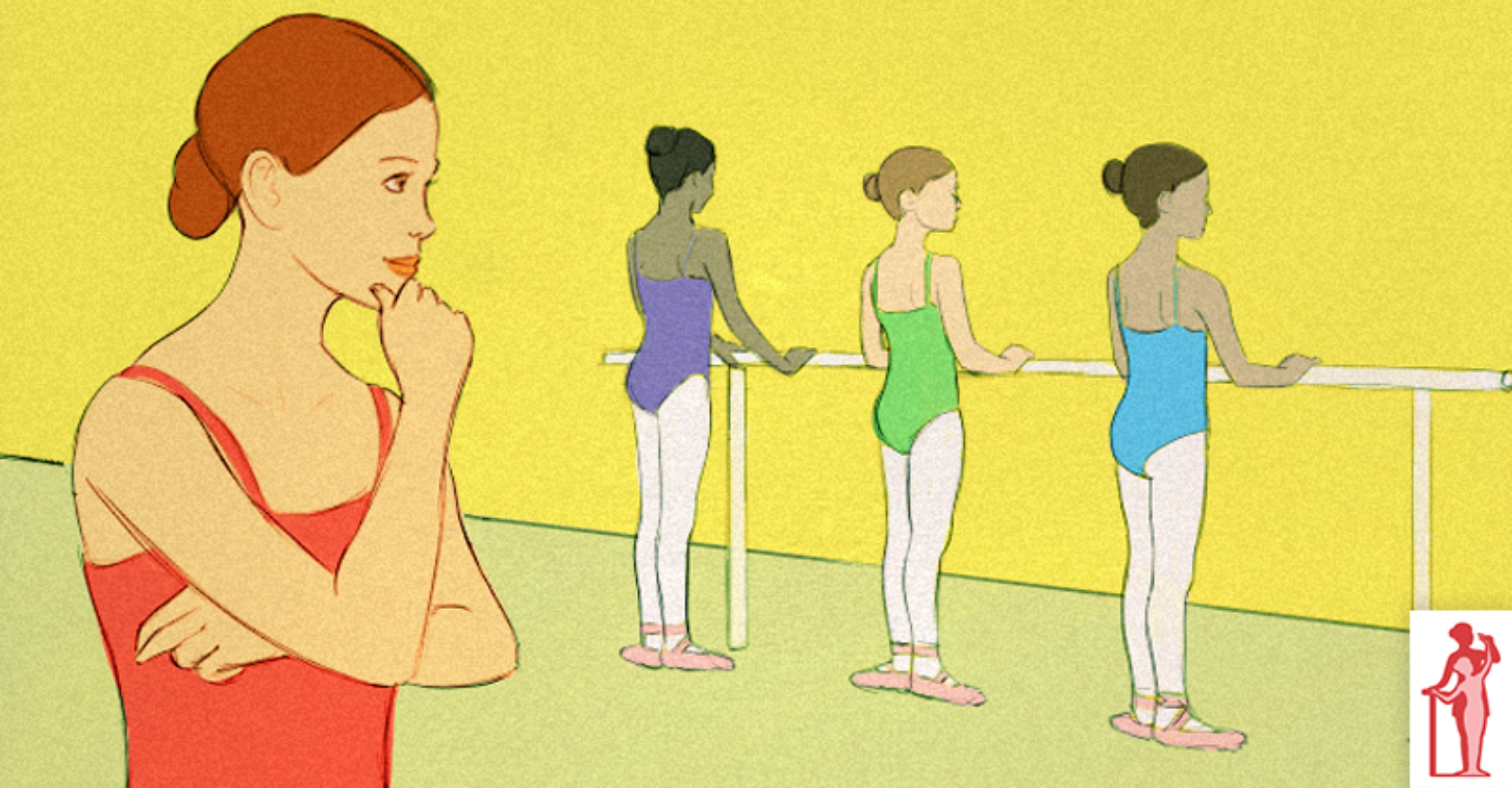A very important first step in Pointe class planning is choosing the appropriate class format for your students. Each class is different, and each teacher has her own style of structuring those first lessons. Today we dive into some of the different ways you could choose to introduce Pointe into class using the Traditional Section Class at the beginning or end of your session, or using the Mixed Class.
The Traditional or Section Class Format
Most teachers put Pointe work for beginners all together in one place: at the end of the class, at the end of the barre, or in a short class all by itself following one of their regular Ballet classes. These class formats will be called “Section Classes” because the Pointe work is done all at once, separate from the regular Ballet work.
Advantages of the Section Class Formats
When pointe work is done in one section of the class: either at the end of the barre or at the end of class, lesson planning is a little easier. Many teachers prefer the end of class, as it motivates the girls to get their shoes changed quickly, and eliminates the second changing.
Students will be less tired, and better able to do better on Pointe if it is done at the end of the barre. If the teacher does not stop the class, but continues with those students who are not on Pointe, the girls will be more likely to hurry. It also helps if they are not allowed to leave the dance studio while changing shoes.
Advantages of the Mixed Class Format
If we use the idea of interval training (See “Conditioning Principles to Improve Pointe Work”), we can create a mixed class where the Pointe exercises alternate with regular barre exercises. This method gives a rest to the toes between each Pointe exercise. This allows more Pointe work to be done sooner than could comfortably be done in the more traditional “section class”.
Students will progress a little faster by this method. It takes a little bit more planning at first to organize the class, but the benefits seem to outweigh the disadvantages. The shoes will wear out a bit sooner with this method, but the first pair seldom wears out before it is outgrown anyway!
By alternating the Ballet and the Pointe exercises, the time actually spent on Pointe in each class can be increased slightly more than with a section class. Toes will be more comfortable, and students should progress faster and stronger and with fewer problems with their feet.
With this method, they bring their Ballet shoes into class and wear their Pointe shoes. When it is time to change shoes, they do not leave the room. They are missing one exercise as they change, and are more likely to hurry in order to rejoin the class.
Combining Beginning Pointe Class with Pre-Pointe Class
Having the Pre-Pointe students in with the beginning Pointe students helps you to keep the class moving, even while some shoes are being changed. Each teacher must decide which method suits her, her students, and her school the best, and use it. Consistency within a Ballet school is important, so if working with other teachers, there must be an agreement on the syllabus and methods to be followed within each year, each class, and each grade.
Choosing a Format
1. Mixed Class–students wear Pointe shoes until Pointe work is finished– requires one change of shoes and wears shoes out faster. It requires a little more planning, and accurate roll keeping. Students are the least tired for Pointe work, as it is near the front of the class. They can do a little more because their toes get a rest between exercises.
2. Section Class at the end of class: requires one change of shoes, but it takes longer to put Pointe shoes on than to take them off. At the end of class students are the most tired, and least able to use muscles well in a new skill. Advantage is you can send non-Pointe students home and concentrate on helping the Pointe students.
3. Section Class at the end of the barre: requires two changes of shoes, but students are less tired than at the end of class. Beginning Pointe can be combined with a Pre-Pointe class.
You know your students best, and your valuable perspective from observation and hands-on teaching will play a huge part in choosing how to bring Pointe into your classroom for the first time. It may take some experimentation to find out what’s best for your class, and sometimes teachers even dabble a little in all three formats! Good luck, and happy beginning of the school year!
Related Articles
- Is My Student Ready for Pointe?
- Recognizing the Student NOT Ready for Pointe
- Conditioning Principles to Improve Pointe Work
- Guidelines for Starting a Student on Pointe


Comments
Moira Blythe says
My best friend's daughter is doing ballet. I appreciate your advice that if she signs up for a section class format, she will be less tired. I think that we should keep her health and energy levels in mind!
Add Comment